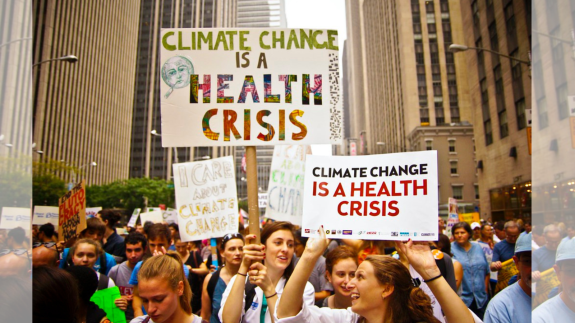Extreme weather is leading to more injury hospitalisations, with heat being the main cause

Australian Institue of Health and Welfare Media Release
The number of hospital admissions for injuries associated with extreme weather – such as heatwaves, bushfires and storms – has increased over the past decade, according to a new report by the Australian Institute of Health and Welfare (AIHW).
The report, Let’s talk about the weather: injuries related to extreme weather, shows that in the 10 years from 2012 to 2022, extreme heat was responsible for most weather-related injuries and that bushfire-related injuries increased during El Niño years.
Extreme weather-related hospitalisations spiked at over 1,000 cases every 3 years, with the spikes becoming progressively higher. There were 1,027 injury hospitalisations in 2013–14, 1,033 in 2016–17 and 1,108 in 2019–20. In each of these 3 years, extreme heat had the biggest impact on hospitalisations and deaths. Extreme heat accounted for 7,104 injury hospitalisations and 293 deaths in the 10-year period analysed.
‘Evidence has shown that over the past 3 decades, there has been an increase in the frequency and severity of extreme weather events, such as extreme heat, bushfires, extreme cold, rain and storm-related events (including high rainfall, floods and cyclones). We are seeing this reflected in hospitalisations and deaths,’ said AIHW spokesperson Dr Heather Swanston (PhD).
‘In the 10 years from 2012 to 2022, there were 9,119 hospitalisations for injury in Australia directly attributeable to extreme weather. Over a similar period, from 2011 to 2021, there were 677 deaths due to extreme weather-related injury.’
With the exception of Tasmania, exposure to excessive natural heat was the most common cause leading to injury hospitalisation for all states and territories. From 2019 to 2022, there were 2,143 hospital admissions related to extreme heat, including 717 patients from Queensland, 410 from Victoria, 348 from NSW, 266 from South Australia, 267 from Western Australia, 73 from the Northern Territory, 23 from the ACT and 19 from Tasmania. The report also includes state and territory data on hospitalisations related to extreme cold, bushfires and storms.
During the 10-year period analysed, there were 773 injury hospitalisations and 242 deaths related to extreme cold. Extreme rain or storms accounted for 348 injury hospitalisations and 77 deaths. The number of injuries related to bushfires was higher in El Niño years.
The data doesn’t include injuries where patients were treated in hospital emergency departments and didn’t require admission to the hospital.
This report includes injuries that were directly attributable to weather-related events but does not include injuries that were indirectly related. For example, it doesn’t include injuries from road traffic accidents that occur due to wet weather since the primary cause of injury would be recorded as ‘transport’.
Hospital admissions for injuries associated with extreme weather make up a small proportion of all hospitalised injuries, but these data provide a starting point for counting extreme weather-related injuries.
The Bureau of Meteorology has declared an El Niño is underway and is likely to continue until at least the end of February 2024, which in Australia includes a period of reduced rainfall, higher temperatures and increased bushfire danger.
The report suggests opportunities to develop weather-related injury surveillance systems.
Like what we do at The AIMN?
You’ll like it even more knowing that your donation will help us to keep up the good fight.
Chuck in a few bucks and see just how far it goes!
Your contribution to help with the running costs of this site will be gratefully accepted.
You can donate through PayPal or credit card via the button below, or donate via bank transfer: BSB: 062500; A/c no: 10495969










3 comments
Login here Register here-
Phil Pryor -
Terence Mills -
New England Cocky
Return to home pageWe hear of a meeting of deficient and evil minded iggies , in London is it (?) where former P M’s Abbott and Howard are part of the blather, celebrating the need for gross stupidity in matters factual, so as to support the drives and needs of the pushy, wealthy, greedy. If actual facts thwart profiteering, then media maggots, money miners, mineral gougers and scrapers, advertising analities and assorted blathering wannabe noticed nongs must gather in desperate efforts to survive and continue perverting, corrupting, dismaying, denying and generally misbehaving like the silly little children most of them actually are…
I live in Far North Qld and just recently the main privately owned hospital in Cairns (Ramsay Cairns Private Hospital) pulled out of maternity care leaving the Cairns Base Public Hospital to cater for maternity care in the Far North which takes in the whole of Cape York, the Gulf country and the Torres Strait islands.
https://www.abc.net.au/news/2023-08-24/cairns-private-hospital-to-close-maternity-services/102772030
In noting this, my point is that taxpayers provide significant subsidies to encourage people to buy private health insurance which is then expended in private clinics and hospitals. Yet, the profit driven fickle nature of private healthcare can just walk away from an essential service and leave it to the public system to pick up the slack.
In my view we should stop subsidising private insurance and private healthcare and ensure that we have a viable and well funded public system that will be there when we need it.
These hospital data are a direct reflection of the changes occurring in the environment:
https://www.smh.com.au/environment/weather/bushfires-climate-change-extreme-heat-el-nino-20231031-p5egb8.html
However, like King Canute, Toxic RAbbott will turn back the tide to the mid 1800s and cancel out the effects of pollution and climate change from that date.
https://www.smh.com.au/world/europe/tony-abbott-says-climate-change-cult-will-be-discredited-20231101-p5egkc.html